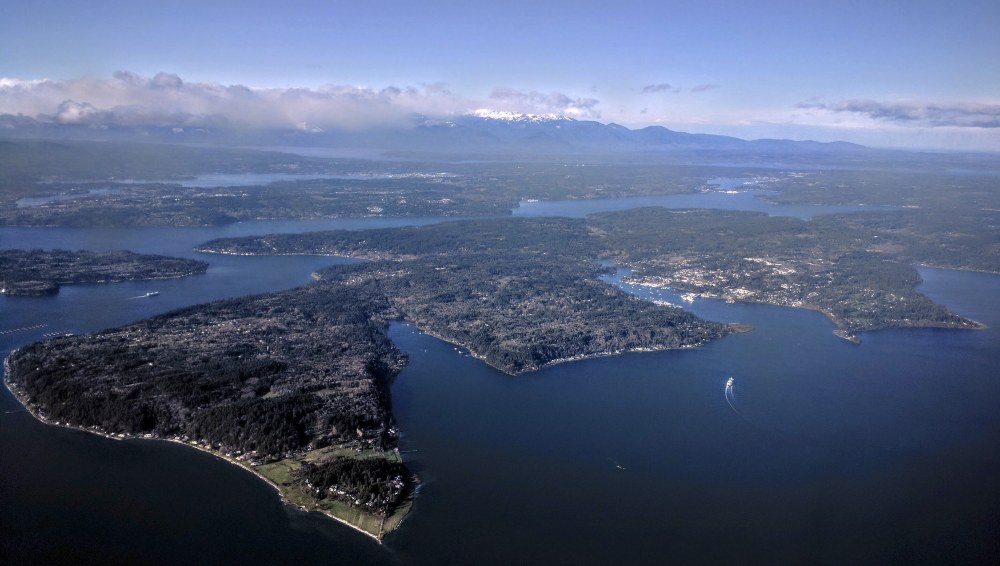
With the United States stretching from coast to coast, President Andrew Jackson, one of our busier and more controversial presidents, found time in 1836 (the last year of his two terms) to organize an exploring expedition of the Pacific Ocean (the Atlantic was already a familiar, well-cruised pond). The expedition was given several names: United States Exploring Expedition, the “Ex. Ex.” or the “Wilkes Expedition.”

Command of this singular adventure was given to United States Navy Lieutenant Charles Wilkes. Wilkes’s background included hydrography, geodesy, and mathematics. Taking the wheel of the USS Vincennes (one of four ships on the Expedition), Wilkes weighed anchor on August 18, 1838.
Heading south from New York, and after a stop in the Madeira Islands, the flotilla entered the port of Rio de Janeiro for a long layover, then proceeded through the wild waters of South America’s Tierra del Fuego into the Pacific Ocean. After visits to Tonga, Fiji (where two crew members were killed by natives), the Sandwich Islands (with a welcome from King Kamehameha III on Oahu), and other South Pacific landfalls, the Vincennes and its sister ship Porpoise, sighted our own Cape Disappointment on April 28, 1841. The Peacock, another sister ship, ran aground at the mouth of the Columbia River (all hands survived, along with journals, chronometers and some ship’s stores).
Crew members were fascinated by the ships’ scientists and their special technical language, tools, packages, and books, often helping the scientists collect specimens (later estimated at 60,000 plants and birds). Seeds were dried, packaged, and eventually sent across the nation, including to the National Institute for the Promotion of Science, later part of the Smithsonian Institution in Washington, D.C. Crew members good-humoredly referred to the scientists as “clam diggers” or “bug catchers.”
An integral part of the Expedition’s shoreline surveys was to map and name everything in sight. The maps became famous and valuable to future mariners. Most of the monikers have survived to our day and are taken for granted by Puget Sound mariners, residents, and visitors.
Examples
Winslow (Bainbridge Island): Captain Wilkes observed the bird-like shape of the harbor, giving it the name Eagle Harbor. He added Bill Point and Wing Point to complete the avian image.
Bainbridge Island: For Commodore William Bainbridge, an officer in the United States Navy and friend of president James Madison.
Elliott Bay: Seattle’s harbor is often believed to have been named for the Reverend J.L. Elliott, chaplain aboard Wilkes’ flagship, but later investigations suggest it might have been to honor an able-bodied seaman named Samuel Elliott, although cabin boy George Elliott was also aboard. The chaplain had disagreements with officers, so the Reverend was left on the beach in Hawai’i during the return voyage. I vote for Cabin Boy Elliott for our Seattle bay’s name.

Port Blakely: Another United States Navy veteran, Captain Johnston Blakely and his crew were lost at sea during the War of 1812.
Port Orchard: Henry M. Orchard was honored during an earlier Puget Sound voyage by Captain George Vancouver (1792) for discovering the nearby waterway off Restoration Point. Wilkes kept the name, presumably to honor both Mr. Orchard and Captain Vancouver, who had earlier named many prominent landmarks such as Mt. Rainier and Puget Sound.
Agate Pass: Sometimes thought to be named for the gravelly beaches along this waterway (legendary home of the Suquamish people), it honors Alfred T. Agate, chief artist aboard Wilkes’ Expedition.
Appletree Cove: Overlooking the charming ferry landing at Kingston, Washington, it was “mis-labeled.” At first Wilkes thought he saw the white blossoms of apple trees along the beach. Later, it was revealed that he had mistaken blooming dogwood trees for the apples.
Port Ludlow: Lt. Augustus C. Ludlow was killed in 1803 when a bow gun exploded.
Port Gamble: The company behind Washington State’s oldest (and at one time largest) sawmill created this New England village. Lt. Robert Gamble was wounded by the same bursting bow gun that killed Lt. Ludlow.
How did the “Ex. Ex.” story end? Wilkes returned to New York in June 1842. During the voyage he promoted himself to full captain, claiming that his superiors had “promised” the higher rank upon his return. Stories began to surface about Wilkes’ penchant for harshly enforcing crew discipline, including a liberal use of the “cat-of-nine tails.” Every one of his officers testified against Wilkes during his court-martial, but he was acquitted of all charges except that of “illegally punishing men” in his squadron.

The illustrations of Alfred T. Agate, chief artist aboard ship, include renderings of natives throughout the South Pacific, as well as geographical prominences along the route.
Wilkes’ “Narrative” of the Expedition, with the assistance of his scientific contingent, grew to 19 volumes. The works provide detailed descriptions of native customs, political and economic conditions at ports-of-call, and technical, medical, and personnel problems that plagued the voyage. Wilkes remained with the United States Office of Coast Survey for several years, before retirement.
Discover more from Post Alley
Subscribe to get the latest posts sent to your email.

Fascinating article! I love how you make history come alive. We thoroughly enjoy your book about our neighborhood, “The Last Electric Trolley”, and are always using it to explore our own backyard.